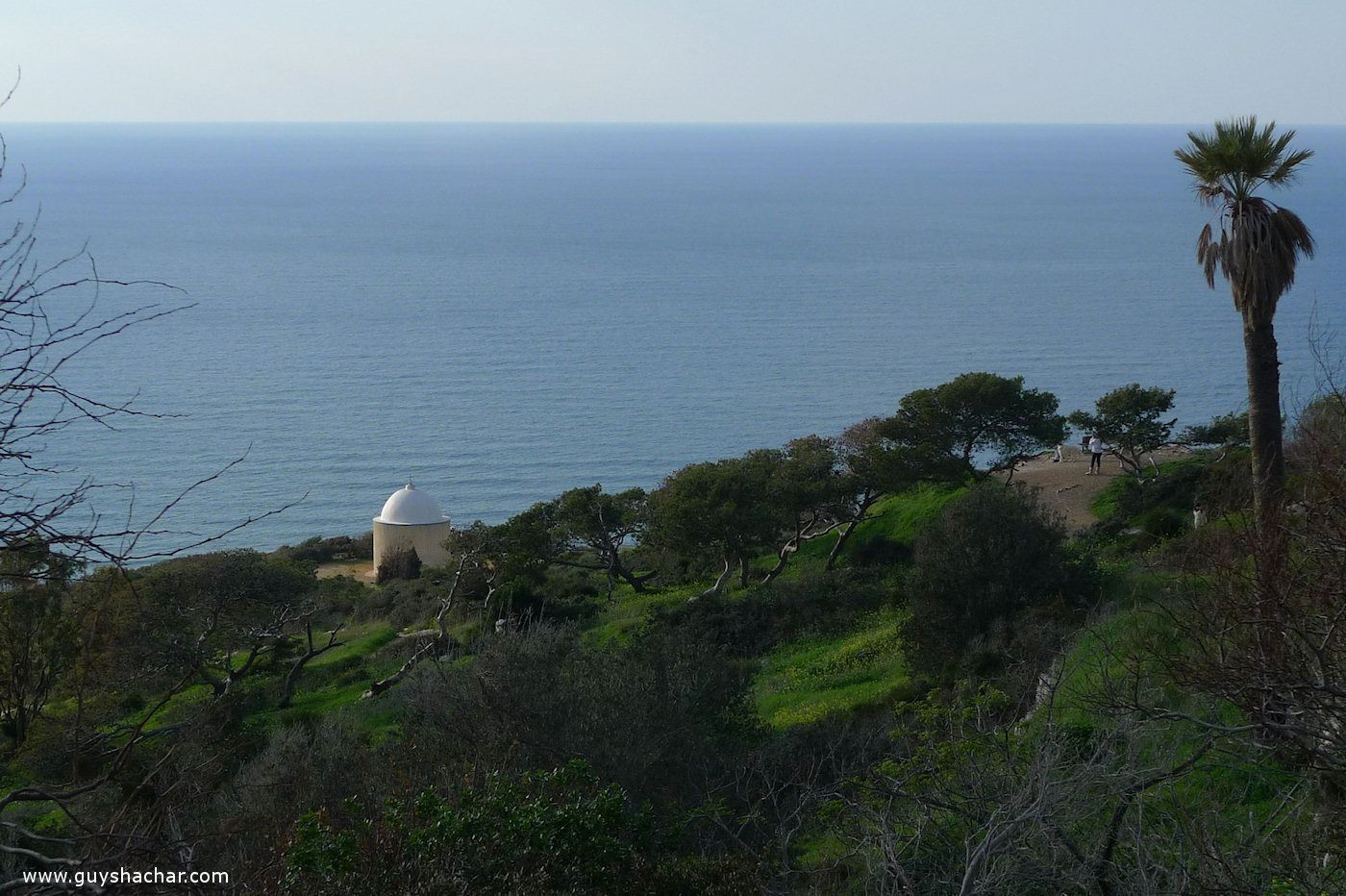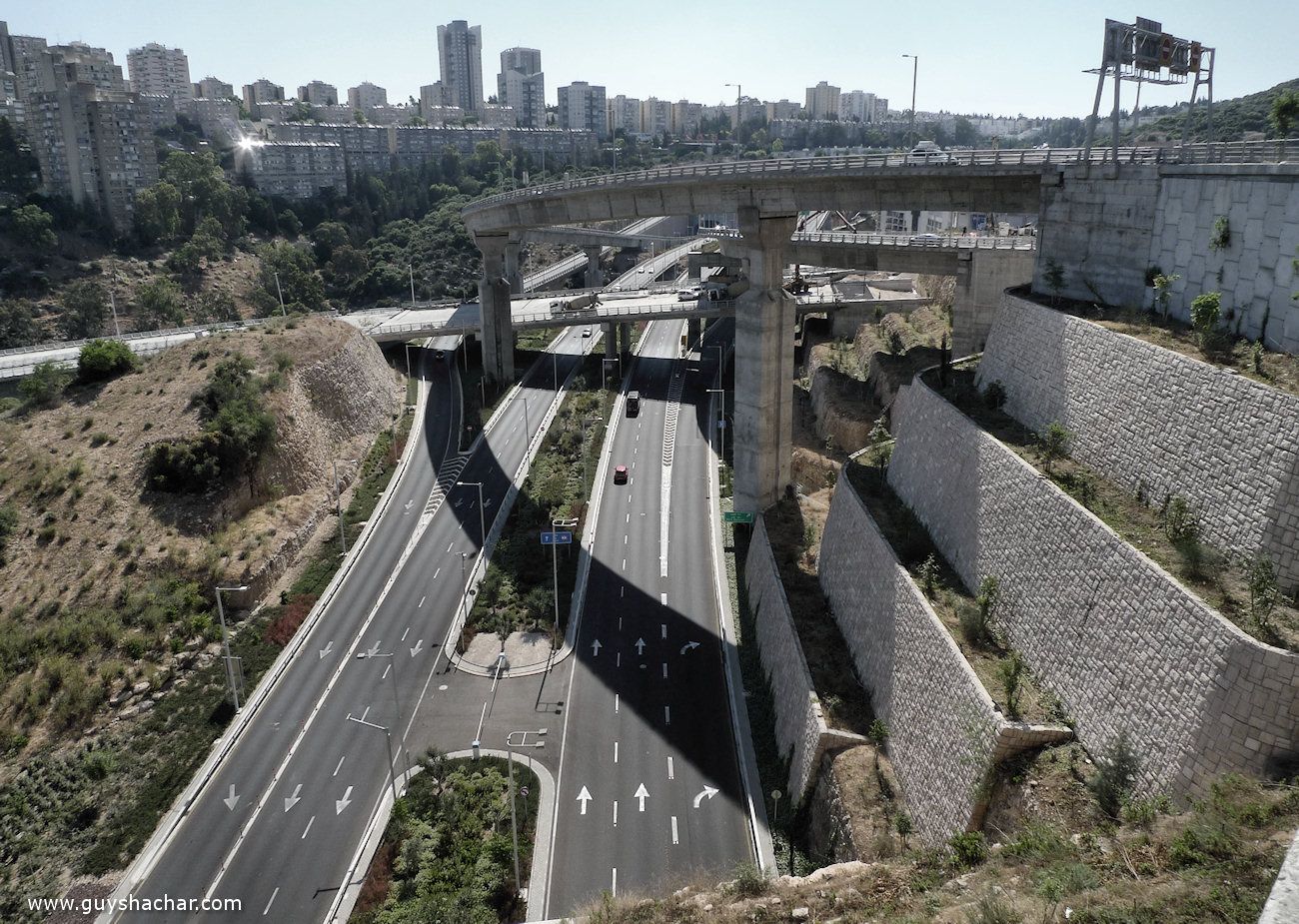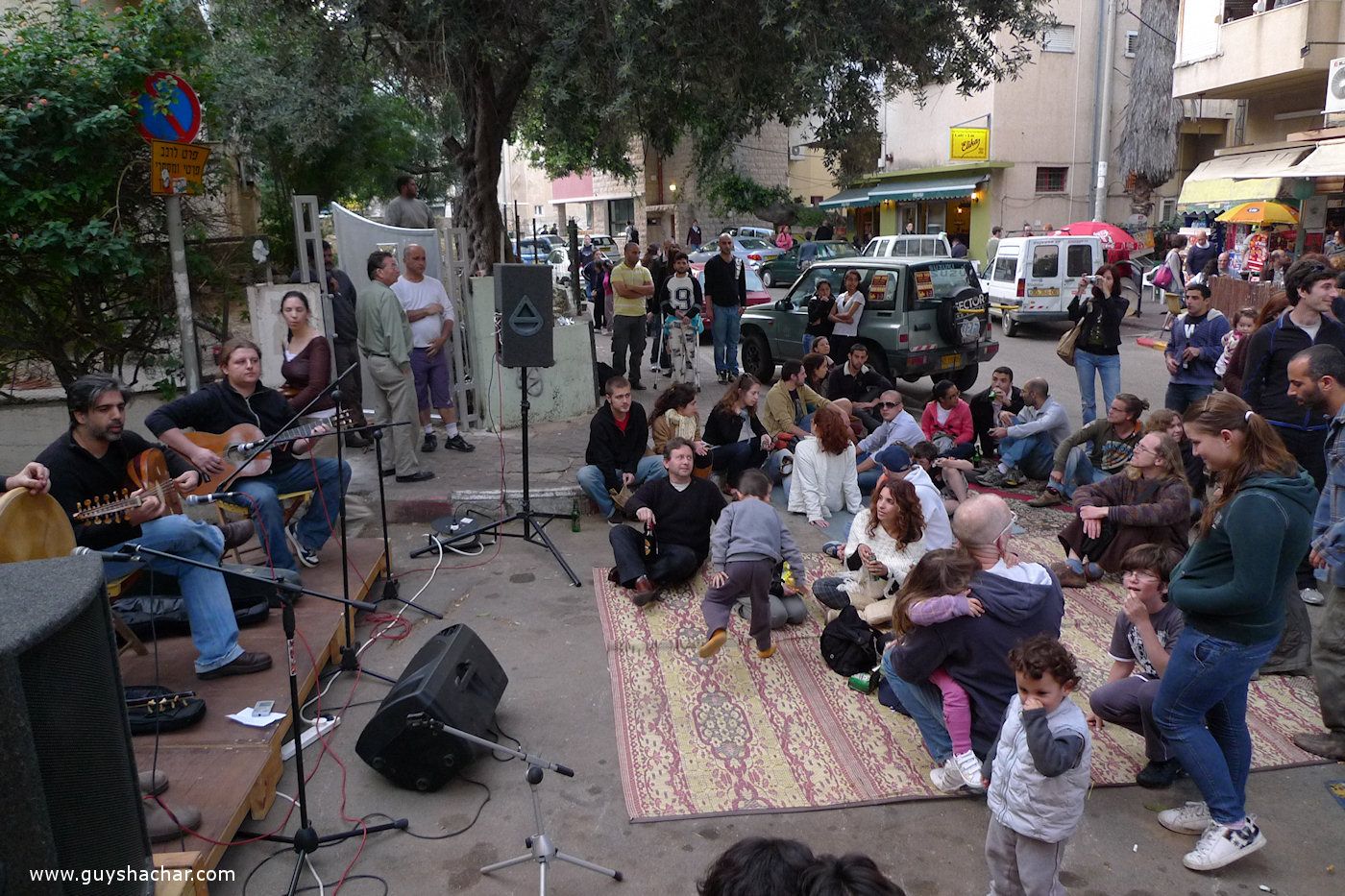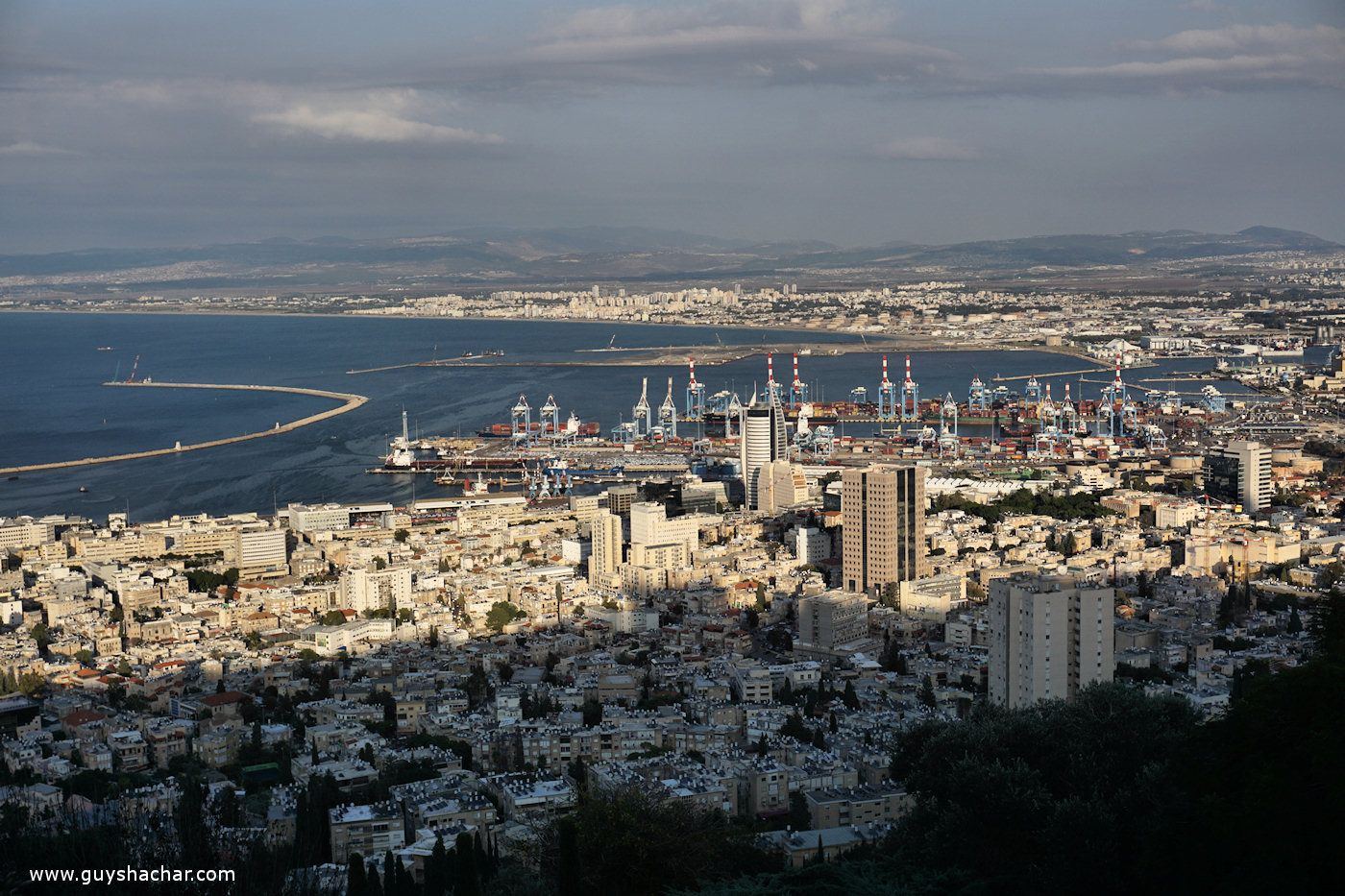Cities with great potential, i.e. good natural setting, rich history and diverse population, do not need much to become successful, desirable places to live. All they need is careful maintenance and leveraging their qualities. But failure to do so can rapidly lead to disaster. Here are 10 definite ways to destroy a city, with Haifa being one of the best cases around.
1. Ignore local DNA
Identifying the DNA of a city is crucial, and by DNA I do not mean finding out how people feel about the city and creating a branding campaign with a fresh logo and slogan. The DNA evolves from a deep understanding of the ensemble of unique features, which can be leveraged as a social-economical asset.
Haifa has a rare combination of mountain and sea, urban nature, rich history, impressive built-up heritage and an exciting melting pot of communities, but for years it has been failing to identify and leverage these qualities. For example, it could have created a thriving urban outdoors sports and recreation scene, for the benefit of its residents and visitors from abroad. But its tourism board is hardly functioning, and not even a city map welcomes visitors arriving downtown by train or by cruise-ship.
Haifa – a unique mix of mountain and sea, and diverse cultures
2. Favor private cars instead of public transport and bicycles
It is already a know fact, that clever mobility must rely on mass transit systems and environmentally friendly personal means, while allocating more space for cars just brings more cars, more traffic congestion and extra frustration.
Haifa has a challenging topography that needs extra attention when planning transportation solutions, but the city favors grandiose solutions rather than practical ones. Buses in Haifa run as a monopoly by a single operator, and no clever solutions are provided to mountain ridge neighborhoods such as a shared taxi service in flexible routes. The municipality has been refraining for years from planning bicycle lanes in most parts of the city, but it does provide a great benefit for students: free car parking in commercial areas.
New roads make Haifa authorities extremely happy
3. Take commerce out of the city center
Mixed-use, rather than zoning, is the best approach for bringing life to cities. When people live, buy, eat and work on the same area, they can walk rather than commute long distances, interact easily with other people, and keep places lively day and night.
From the late ’80s and during the ’90s, Haifa has been severely affected by the malls boom imported from the United States. Numerous shopping centers were built far from populated areas in an already spread-out city. The result was disastrous – downtown and midtown areas were emptied from uses and people, while car traffic increased to reach distant commerce centers. Haifa does nothing to fix this – its new master-plan designates a hectic industrial-commercial area far from the historical city center to be the metropolitan (broken) heart. This approach is unfortunately quite popular in numerous cities in developing countries, one of the most striking of them is in Yangon.
4. Build new neighborhoods instead of developing existing ones
Upgrading existing neighborhoods is the best way to improve urban resilience and quality of life. Building on vacant plots, providing incentives to populate ghost apartments, expanding existing buildings, together with improving services such as education and health, attract people and increase population density. Upgrading an existing built-up area is beneficial in the long term, and can even be economically efficient in the short term, as development costs to create new urban infrastructure are high.
Haifa is mastering the approach of neglecting existing neighborhoods and building on virgin land. Some new Haifa neighborhoods are built on steep slopes home to valuable natural qualities. This makes the infrastructure development extremely costly, and increases the projects’ environmental impact.
5. Destroy old urban tissues
Although developing existing neighborhoods is important, this should not harm delicate urban tissues. Even a decades old neighborhood will have already created its own character, which distinguishes it from others. This physical-cultural aspect adds an important look and feel, as well as a sense of belonging to its residents. Performing “urban renewal” projects, does not mean that new buildings should completely replace older ones. On the contrary. existing layers should be preserved as much as possible, with new layers added to them. Such approach adds more deepness and meaning to the built environment, and renders a more organic living environment.
Haifa still does not have a firm policy for preservation criteria of its buildings and urban tissues, and numerous neighborhoods are undergoing or will undergo radical changes, that will eliminate their characteristics, create sterile depressing environments and cause unhealthy gentrification.
Demolition of apartment buildings in a village-like neighborhood
6. Eliminate urban nature
People love nature. Being in nature is a true joy and an inevitable part of our well-being. And by nature I do not mean petunia plant pots on junctions. I mean trees, many of them, and the oldest of them make the real effect. Urban areas that enjoy a natural setting with trees provide an extremely beneficial advantage to the quality of life in the city.
Haifa is located on the Carmel mountain, with an abundance of rich Mediterranean vegetation. Neighborhoods were historically built on ridgetops, while the areas in between – “Wadis”, dry creeks, were left green. But this has been changing recently, as the municipality promotes large scale construction projects on forested hills. In addition, the municipality fails to manage its vast urban nature.
Roads instead of trees, in an area formerly owned by a national forestry agency
7. Suppress grassroots initiatives
The best things happening in the city sprout within the community. Street events, community gatherings, street art, flee markets – these innate activities make the city a lively place.
For years, Haifa has been favoring large pompous, insipid events while hardly supporting local initiatives, and paying attention to the rare diversity and qualities of its communities. Thus, initiatives like Haifa Trail (disclosure: my initiative…) remain virtual.
Street Party – A community initiative which is hardly adopted by the municipality
8. Enlarge the city administration as much as you can
“Smart Cities” is a very popular quest nowadays, but I can guarantee you that no city will turn smarter with merely technology. Smart City is first and foremost smart management of the city. Have an efficient management with loyal execution teams, backed up by assisting technologies. Enlarging a municipal administration paralyzes the city: Too many cooks spoil the broth, and the more clerks and managers, the more bureaucratic and corrupt the system becomes.
Haifa is in love with its own administration. It has so many deputy mayors that I’m not sure they even know about each other. Projects in Haifa take years over years to be carried out. While the administration keeps growing, needing a new high-rise building, the municipality still fails even to properly collect its own city tax.
A view from the municipality tower to another municipality building (bottom-right) and city center
9. Surrender to outside forces
Outside forces that contradict the city’s interests are a true disaster, as they might negatively affect the quality of life and harm positive development.
Haifa inherited an unfortunate legacy from the British: A petrochemical industry complex. Privatized now, this industry is a threat to air quality, public health and the enhancement of the Haifa metropolitan area. In addition, the Israeli government decided to solve its dispute with the Haifa port labor union by building a new, unnecessary port, thus, dissecting Haifa metropolitan area, and the navy keeps strangling Haifa’s waterfront. Instead of opposing these destructive developments, the municipality has been trying to convince Haifa residents that vast areas of logistics facilities is what the city needs, and that the air in Haifa has never been cleaner.
A new port is under construction on a crucial spot of Haifa Bay
10. Elect a tired leadership
Mayors, together with their close group of managers and advisers, are powerful and highly influential on a city’s direction and destination. An enthusiastic leader will take the city forward. A tired leader will encourage no progress, and no progress in current reality means stepping backwards.
Haifa’s leadership is tired, dispassionate and old fashioned, and is central to the failure of Haifa to become a thriving city.







2 Responses
Diane Romm, Haifa
Excellent piece. Hope you’ve been in touch with Einat Kalisch-Rotem at https://bhaifa.org/ because I think she shares your vision and as mayor of Haifa, could make it happen.
judi Gor Zimmerman
beautiful sharp analysis
Judigor